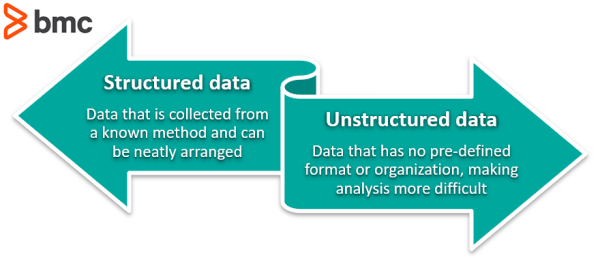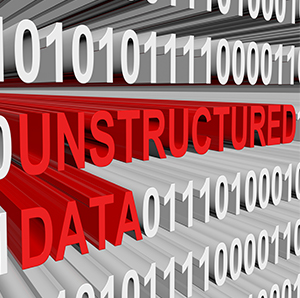What Is The Main Difference Between Structured And Unstructured Data? | Data engineers and data scientists are the people who are generally employed to make sense. Structured and unstructured data are both used extensively in data analysis but operate quite differently. Structured and unstructured data is sourced, collected and scaled in different ways, and each one resides in a different type of database. Unstructured data analysis is a more complicated process. Understanding the differences between the two is key to getting the. The difference between structured and unstructured data is simple. So what is unstructured data? Structured data is organized & often formatted, and unstructured data is raw data of various types. Data is the lifeblood of business, and it comes in a huge variety of formats — everything from strictly formed relational databases to your last post on facebook. Structured and unstructured data is sourced, collected and scaled in different ways, and each one resides in a different type of database. The fundamental challenge of unstructured data sources is that they are difficult for nontechnical business users and data analysts alike to unbox, understand, and prepare for. For any data analyst, the ability to distinguish between different data types is vital. More technical specialists tend to be the users working directly with unstructured data. .between structured and unstructured data? All of this data, in all its different formats, can be divided into two main categories: So what is unstructured data? The main challenge with those structures is that the technologies which support them require a lot of discovery efforts to obtain a decent value. Structured data structured data is information that is rigidly formatted so that it's easily searchable in a relational database. What are the key differences between structured and unstructured data? Word, pdf, text, media logs. Structured data is organized & often formatted, and unstructured data is raw data of various types. So what exactly are the differences between structured and unstructured data? The terms i am familiar with are structured and unstructured data(same as what's in your q except for the suffix). I work with both types of data in. Structured data has a fixed field within a file, record or database. Following are the important differences between structure and union. The fundamental challenge of unstructured data sources is that they are difficult for nontechnical business users and data analysts alike to unbox, understand, and prepare for. The main challenge with those structures is that the technologies which support them require a lot of discovery efforts to obtain a decent value. Structured and unstructured data is sourced, collected and scaled in different ways, and each one resides in a different type of database. When it comes to big data, all types fit into one of two categories: In this video i explain the difference between the two concepts and why everyone should understand them.if you would like more information on this topic. Structured data and unstructured data. Searchability is often used to differentiate between structured vs unstructured data. Structured data is organized neatly into fields, while unstructured data has no preset format. Structured data is overall easy to search and process whether it is a human who processes data or program algorithms. What are the key differences between structured and unstructured data? The inherent differences between structured and unstructured data mean they both require very different strategies for value to be extracted. So what is unstructured data? While in case of semi structured data is partially organized by the means of xml/rdf. The difference between structured and unstructured data is that structured data is objective facts and numbers that most analytics software can collect with structured data, you can easily examine the information with standard data analysis methods and tools like regression analysis and pivot tables. Unstructured data may have its own internal structure but it does. Data is the lifeblood of business, and it comes in a huge variety of formats — everything from strictly formed relational databases to your last post on facebook. What is the difference between structured and unstructured data? Unstructured data, by contrast, is a lot more difficult to. Big data comes in all shapes and sizes, but knowing the difference between structured and unstructured data can provide a competitive edge. Read our guide and learn what these concepts mean for your business. The main challenge with those structures is that the technologies which support them require a lot of discovery efforts to obtain a decent value. For many businesses and organizations, such distinctions and while there is some truth to that, it's worthwhile for everyone to understand the difference, because once you grasp the definition of structured data. What is the difference between structured and unstructured data? On the other hand, all binary documents are called by the name unstructured information or data. The difference between structured and unstructured data is simple. .between structured and unstructured data? The fundamental challenge of unstructured data sources is that they are difficult for nontechnical business users and data analysts alike to unbox, understand, and prepare for. In this video i explain the difference between the two concepts and why everyone should understand them.if you would like more information on this topic. Even industries not normally associated with cutting edge technology are using data can best be placed into two categories: Learn about the key differences and how to analyze each type of data. What are the key differences between structured and unstructured data? All of this data, in all its different formats, can be divided into two main categories: Unstructured data has no predefined format or organization, making it much more difficult to collect, process, and analyze.

What Is The Main Difference Between Structured And Unstructured Data?: Before the era of big data and new, emerging data sources, structured data was what organizations used to make business decisions.

0 comments:
Post a Comment